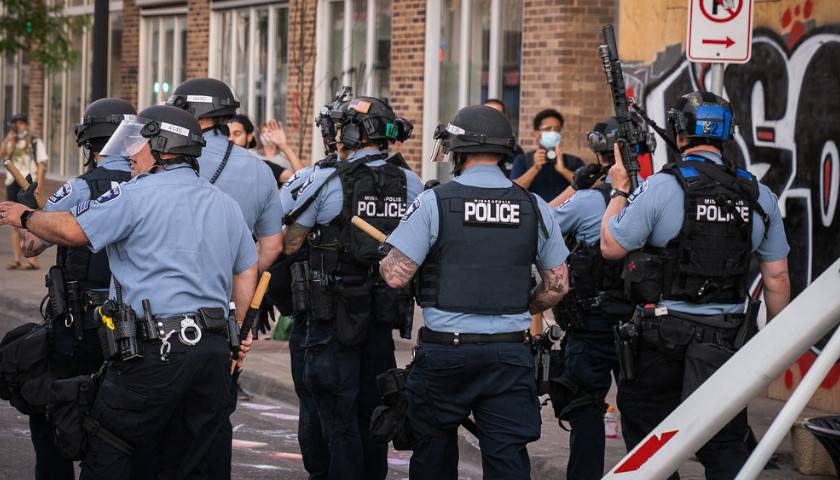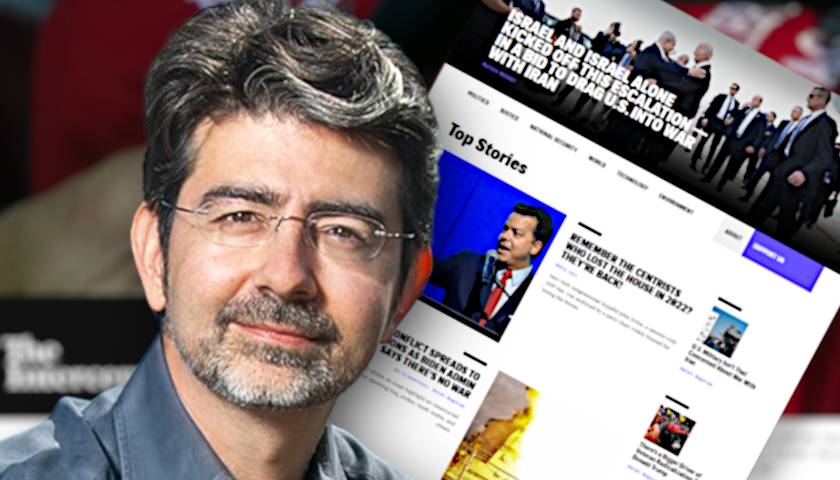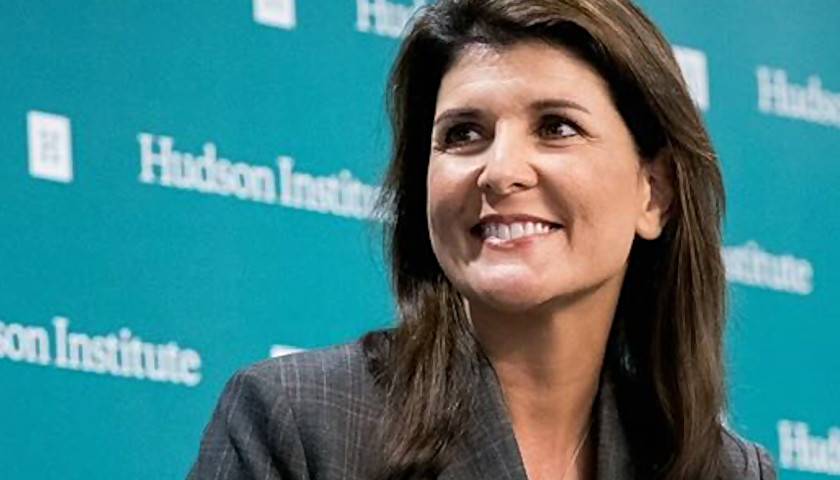by Steven Richards
As crime rates climb across the nation, police departments in several major U.S. cities are facing a crisis, namely, the inability to recruit new police officers. As a result, staffing shortages have led to increased overtime, thinly spread patrols, and a rise in crime rates.
Violent crimes remained higher during the first half of 2023 compared to the first half of 2019, according to the Council on Criminal Justice. The International Association of Chiefs of Police published a paper called “A Crisis for Law Enforcement” that shows 78% of law enforcement agencies have had “difficulty in recruiting qualified candidates” and that 65% reported having “too few candidates applying to be law enforcement officers.”
Staffing issues have been reported over the last year in Minneapolis, San Francisco, and New York, among other cities. At the same time, many of these same cities – including their elected officials – embraced the “defund the police” movements across the country in the wake of the Black Lives Matter protests and riots in the summer of 2020.
Police officials say this one-two punch of violent riots and demonization of law enforcement has created a national narrative that contribute to resignations and retirements. In many instances, these shortages arose after attempts—some successful—to reduce funding to or reorganize police departments.
For example, the Minneapolis Police Department (MPD) is currently experiencing its “most significant exodus” of officers in its history, according to The Star Tribune. Last month, the number of uniformed officers at the department reached its lowest level in four decades. According to a Star Tribune analysis, Minneapolis has the lowest ratio of police officers to population among the 22 American cities that it sampled with 1.4 officers per 1,000 residents, which is half the national average of 2.4.
“This is absolutely not sustainable,” Chief Brian O’Hara of the Minneapolis Police Department told the newspaper. “Thank God for all these other agencies that are filling this gap,” he continued, referring to law enforcement partners like sheriffs’ offices and civilian analysts who are assisting MPD in carrying out its functions during the shortage.
MPD has been forced to reduce the activity of or entirely eliminate units dedicated to proactive policing. Sometimes as few as four officers are tasked with patrolling a miles-wide precinct during a given shift, showing the real impact of a thinned-out force.
NeighborhoodScout.com, an internet-based real estate location service monitors FBI data and lays the information in chart form. According to their interpretation of FBI data, Minneapolis has 13.42 violent crimes per each 1,000 residents, measured against a national median of 4. The data also shows that your chances of being a violent crime victim are 1 in 75 in that city.
After the George Floyd riots in Minneapolis in the summer of 2020, MPD faced mounting resignations, retirements, and disability claims, the Star Tribune reported. Many of the disability claims were related post-traumatic stress disorder connected to the increasingly stressful conditions during the Floyd demonstrations.
George Floyd, a black male, died in Minneapolis police custody after a white officer placed a knee on his neck for eight minutes. Immediately after the incident, Minneapolis Mayor Jacob Frey took to social media to condemn it.
As protests mounted across the city, the mayor pleaded with the protestors to go home and indicated that he wanted to restore peace to the city. Yet the protests continued, and many turned violent. At the apex of the protests, the 3rd Precinct station of the MPD was burned down by rioters.
In the aftermath, the Minneapolis City Council pledged their support in “dismantling” the police department with a veto-proof majority. “We will be taking intermediate steps toward ending the MPD through the budget process and other policy and budget decisions over the coming weeks and months,” one council member told the crowd gathered in a park. Mayor Frey broke with the council and called for a “full structural revamp” rather than abolishing the police department.
Mayor Frey stood against attempts of the council to abolish the department, but eventually, advocacy groups succeeded in placing the measure on a public ballot. During the city’s November 2021 elections, residents voted 57% to 44% against the provision to dismantle the MPD and reelected Mayor Frey.
In June, the U.S. Department of Justice released a report from its investigation into death of George Floyd while in police custody. The Justice Department found “reasonable cause to believe” that MPD officers participated in a “pattern or practice of conduct that deprives people of their rights under the Constitution and federal law.”
These actions found by the DOJ included excessive use of force, unlawful discrimination against Black and Native American people, and violations of rights of people engaged in protected speech. According to the Justice Department, “the city and MPD have agreed in principle to resolve the Department’s findings through a court enforceable consent decree with an independent monitor.”
Yesterday at a hearing before the House Judiciary Committee, Attorney General Garland answered questions from Rep. Tom Tiffany (R-Wis.) about the consent decree and the declining number of officers in Minneapolis. Garland said that he supports the consent decree. Tiffany seemed to claim that the implementation of the decree was related to the decline in police officers, to which Garland responded that “Minneapolis has been losing police officers for many years.”
Minneapolis is hardly alone. This week, internet-based news platform The San Francisco Standard reported that the San Francisco Police Department (SFPD) was visiting universities as far away as Texas in an effort to recruit new police officers to move to the Bay Area. Though a police spokesperson told the Standard that the number of applicants to SFPD has increased 20% over the past year, staffing issues have forced the department to implement new recruiting pushes to attract new applicants to the city.
Shortages in the SFPD follow San Francisco Mayor London Breed’s efforts to cut funding to the police department in the wake of the BLM protests in summer 2020. In July of that year, Mayor Breed announced $120 million in cuts to the SFPD in her budget proposal, funds which would instead be redirected to “reduce disparities” in the Black community.
Between 2017 and 2022, SFPD spent $88.9 million more on employee compensation while its staff actually worked fewer hours in total, according to City Controller’s Office data analyzed by the Standard.
The department said that this apparent paradox is due to the increase in overtime hours, which jumped 54% between 2021 and 2022. The department attributed a measured 8% decrease in regular hours worked to a shortage in its sworn officer corps. In January of this year, the SFPD had approximately 600 fewer officers than the number recommended by a staffing analysis conducted by the department.
“It was a painful sacrifice,” Police Chief Bill Scott said of the cuts, according to ABC 7 News. “I said that then and I still say it now, but I understood it.”
While the cuts remained, the city experienced an increase in property crimes and looting. Mayor Breed reversed some of her rhetoric on defunding the police department and called for police to be “less tolerant with the bulls***.”
According to a Fox News analysis of SFPD data, “Total crime in San Francisco, including property and violent crimes, increased 14% in 2021 compared to 2020.” The outlet said that “Total crime increased another 7% in 2022.”
This year, the San Francisco Board of Supervisors—the city’s legislative body—approved a new contract agreement with the SFPD to “incentivize officer retention and recruitment,” during the shortage and rising crime. The contract promises “the highest entry-level salary” of competing jurisdictions in the Bay Area, to create a new pay raise scale for years of service, to make it easier for officers hired from outside jurisdictions to be promoted, and to provide emergency childcare services for officers held for overtime.
The press release made no connection in the shortage of officers to previous budget cuts for the department and rhetoric from the mayor and the Board of Supervisors.
New York City – another city whose legislators embraced the “Defund the Police” narrative – is also experiencing a police officer shortage during crime surges. In March The New York Post reported that New York Police Department (NYPD) officers have been resigning at a “record breaking pace.” Early in 2023, resignations more than doubled from the same period the year before as major crimes—such as burglary, robbery, and grand larcenies—continued to rise in the city.
The data, which the Post analyzed earlier this year, showed that the NYPD had lost about 900 staff from 2022 and was down 2,500 from the staffing peak in 2019, before the coronavirus pandemic and the BLM protests. This has led to an increase in city funds being spent on overtime pay to $740 million during the fiscal year, nearly double the budget set aside for such expenses.
Unlike the other cities, New York’s Mayor Eric Adams – himself a former police captain – rebuffed calls to defund the police during his mayoral campaign, saying “The prerequisite for prosperity is public safety.” After being elected, Adams proposed to keep funding for the NYPD at the same level and redeploy manpower to increase public safety.
Despite Adams’ opposition to defunding, The Manhattan Institute points out that in early 2023, progressive city council members carried the “defund” meme into a new budget season. The city council’s progressive caucus, comprising 19 of the council’s 51 members, said that as a statement of principle, it will “do everything we can to reduce the size and scope of the NYPD … and prioritize and fund alternative safety infrastructure that truly invests in our communities.”
In the middle of the police officer shortage and the rise in crime, the mayor’s administration is now proposing cuts to NYPD overtime pay to help the city deal with the influx of illegal immigrants. Mayor Adams’ budget director told the city’s uniformed agencies, which include the Fire Department as well as NYPD, that their leadership has to come up with a plan to lower overtime costs.
This move comes after Mayor Adams has warned of the coming financial impacts of the immigrant crisis, calling it a “financial tsunami,” and called for President Biden to do more to control the border. “This is not utopia. New York City cannot manage 10,000 people a month with no end in sight,” Adams told “PIX on Politics.” “That can’t happen, and that is going to undermine this entire city,” he continued. New York City officially declared itself a “sanctuary city” in the 1980’s.
Mayor Adams criticized President Biden on Wednesday for not meeting with him during the President’s trip to New York for the UN General Assembly. “President Biden’s coming to the city. I am hoping that he understands this beautiful city that’s the economic engine of the entire country is being saddled with $2 billion that we spent already, $5 billion we’re going to spend in this fiscal crisis, $12 billion in the next two budgetary cycles,” Adams said at a press conference, referencing the city’s financial difficulties as more than 100,000 migrants have arrived there. “New York doesn’t deserve this. The asylum seekers don’t deserve this.”
In a June 2021 survey comparing staffing levels in the year since the BLM protests, the Police Executive Research Forum—a nonprofit organization that focuses on police issues—found that resignations and retirements were driving the decrease in police officers across almost 200 police agencies nationwide. The comments, delivered by survey respondents anonymously, shed light on the reasons why police officers were resigning or leaving the force at such high rates.
“We have seen an approximate 40% reduction in applicant packets this last fiscal year. In addition, we are seeing fewer ‘above average’ candidates,” one department told the researchers. “The current rhetoric and negativity surrounding law enforcement is having a negative impact on the number and quality of applicants we recruit.”
“Applications have decreased dramatically, making hiring extremely difficult. And our officers have fatigue from working long shifts and covering backfill slots to supplement staffing,” another department said.
“Officers are depressed over the negative national narrative about the police. They also have pandemic fatigue,” a department said about the national climate.
Denver Police Chief Paul Pazen told Time magazine that without new officers, his department is taking an average of two minutes longer to respond to 911 calls—which is especially concerning because of the city’s increase in homicides, shootings and serious domestic violence cases.
“We are holding things together with duct tape and chewing gum right now,” says Pazen.
– – –
Steven Richards is a freelance investigative researcher for Just the News who previously worked for the Government Accountability Institute.
Photo “Minneapolis Police Officers” by Chad Davis. CC BY-SA 2.0.




